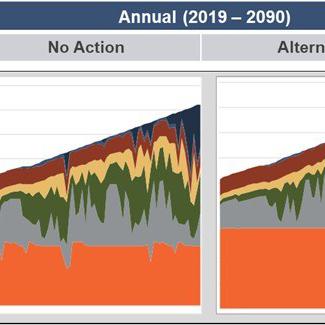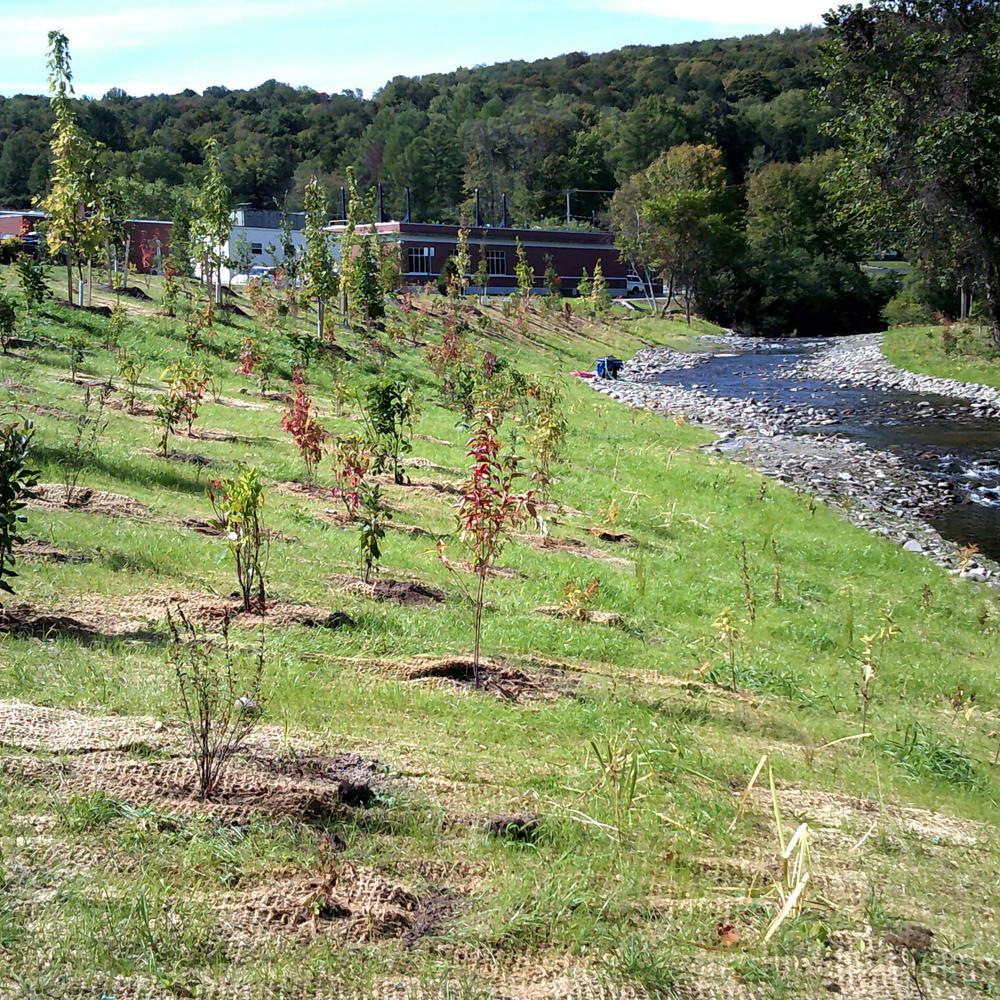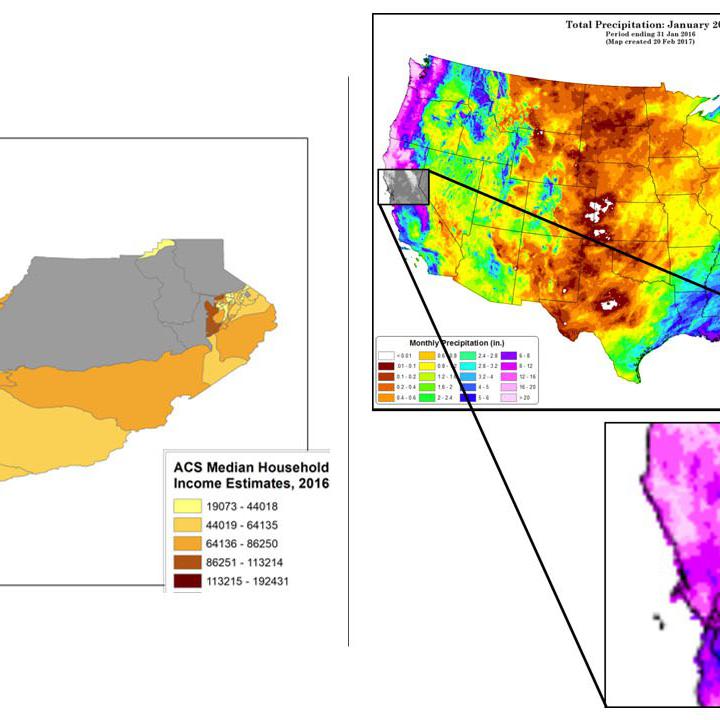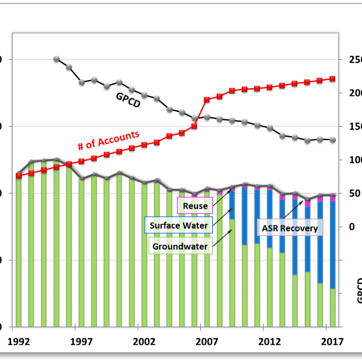Replacing Dam Gates Under Tight Deadlines and Billions of Gallons of Water
Hazen helped the Upper Potomac River Commission replace the gate system of a large, complicated Maryland dam on an emergency schedule.
At a Glance
- Hazen helped the Upper Potomac River Commission (UPRC) complete an emergency inspection and replacement of the Savage River Dam’s gate system, which controls the flow of 6.3 billion gallons of water used by hundreds of thousands of people.
- The Firm helped UPRC win a $6 million federal grant to cover costs, developed a highly customized design, and met fast-track emergency deadlines.
- Hazen later used cutting-edge flood modeling to update the dam’s probable maximum flood (PMF) to half its original size—helping UPRC avoid spending an estimated $5 million on additional improvements.

Jeff Powers has served as a technical lead specializing in high hazard dam design and rehabilitation, river and floodplain hydraulic analysis, culvert and bridge analysis, and levee rehabilitation.
Top: The scenic Savage River Reservoir from the top of Savage River Dam.
Related Topics:
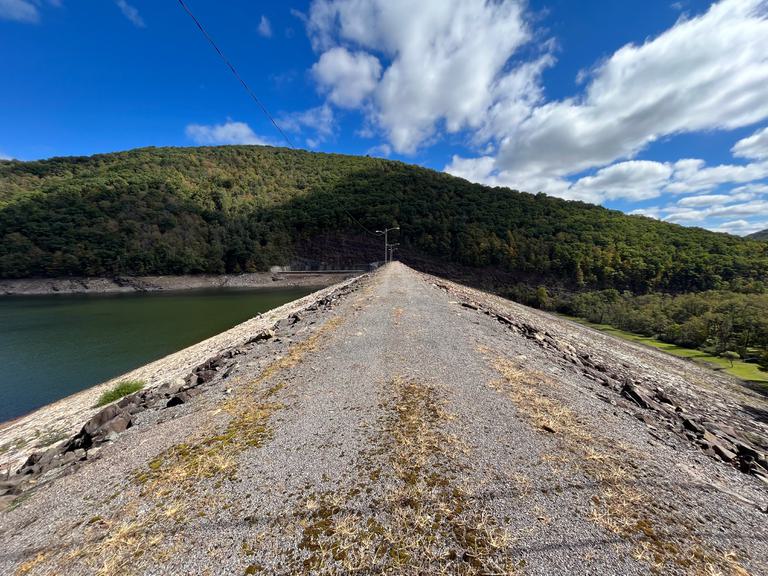
View of the Savage River Dam from the top of the dam...
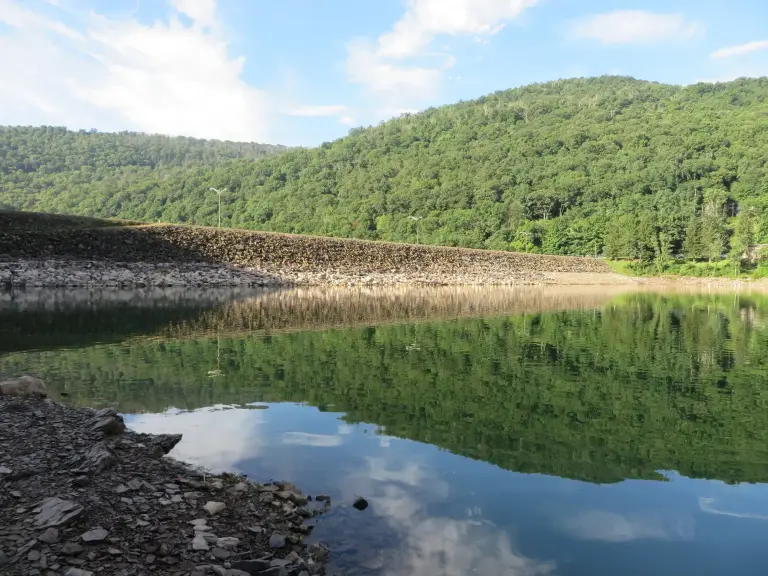
... and a view of the Savage River Reservoir.
There’s a lot resting on the Savage River Dam, in western Maryland, beyond 6.3 billion gallons of water.
At 182 feet tall—roughly 13 stories—it’s one of the state’s biggest dams. Since the U.S. Army Corps of Engineers completed it in 1952, its earth-and-rockfill barrier has shielded the City of Cumberland from severe floods. The Town of Westport depends on its reservoir for drinking water. The dam’s releases also support downstream trout populations in a prized fishing area and eventually feed into the Potomac River, the main source of water for the greater Washington, D.C., area.
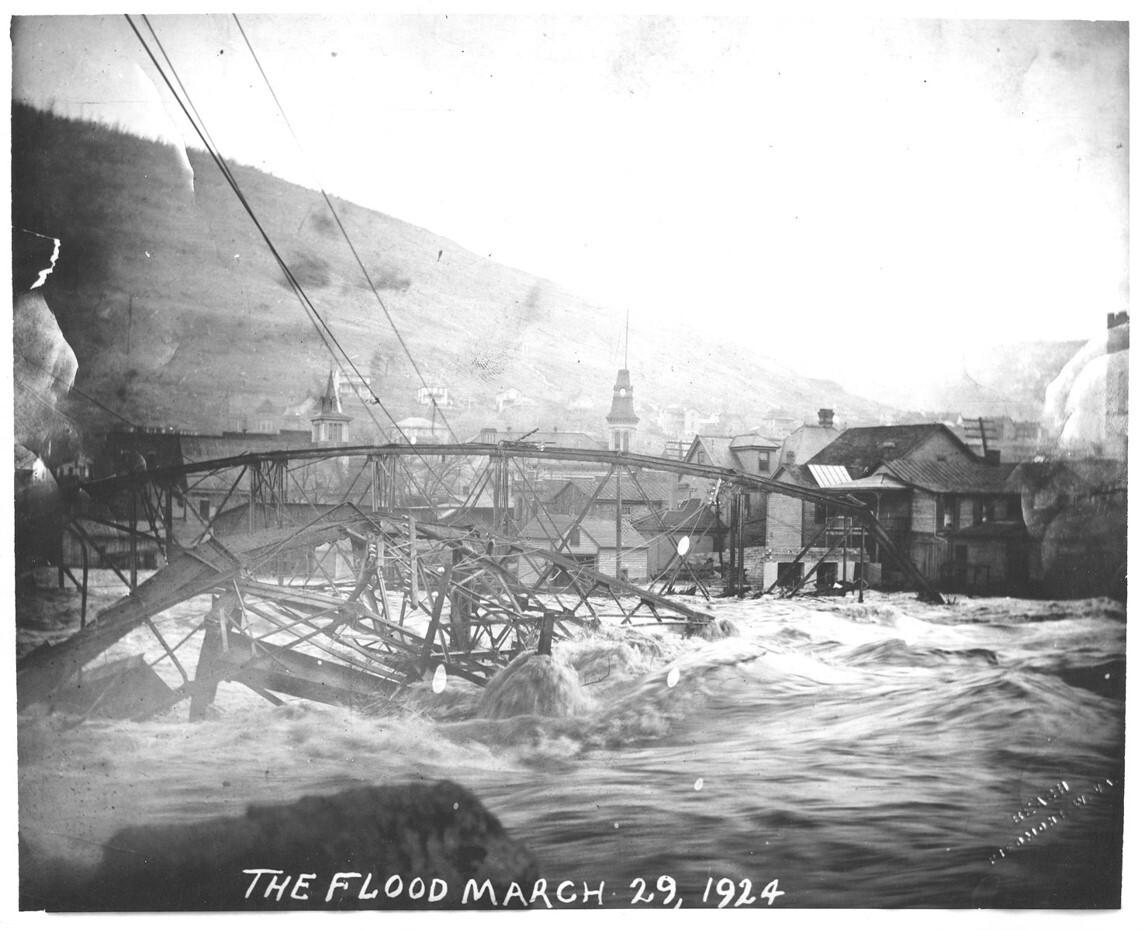
In 1924, flooding of the Potomac River—which the Savage River feeds into—devastated downstream towns like Cumberland, Maryland (pictured here). The Savage River Dam was later built to prevent such floods as well as low-flow conditions during droughts.

Several times a year, dam operators allow scheduled high-flow releases from the dam, turning the river into a hotspot for whitewater rafting. Photo courtesy of Wilderness Voyageurs.
When one of the dam’s emergency gates abruptly stopped working, the Upper Potomac River Commission (UPRC), which owns and operates the dam, knew it had an emergency on its hands. UPRC hired Hazen to complete an inspection and repair as quickly as possible.
Under Literal Pressure
Water exits the reservoir through two parallel pairs of gates—an emergency set followed by a main set—in tunnels in the dam’s base. The emergency gates are the first barrier to the billions of gallons of water in the reservoir. And they’re 100 feet underground, as is the chamber for controlling them. Just to safely inspect the gates, the team had to lower the reservoir level by 68 feet.
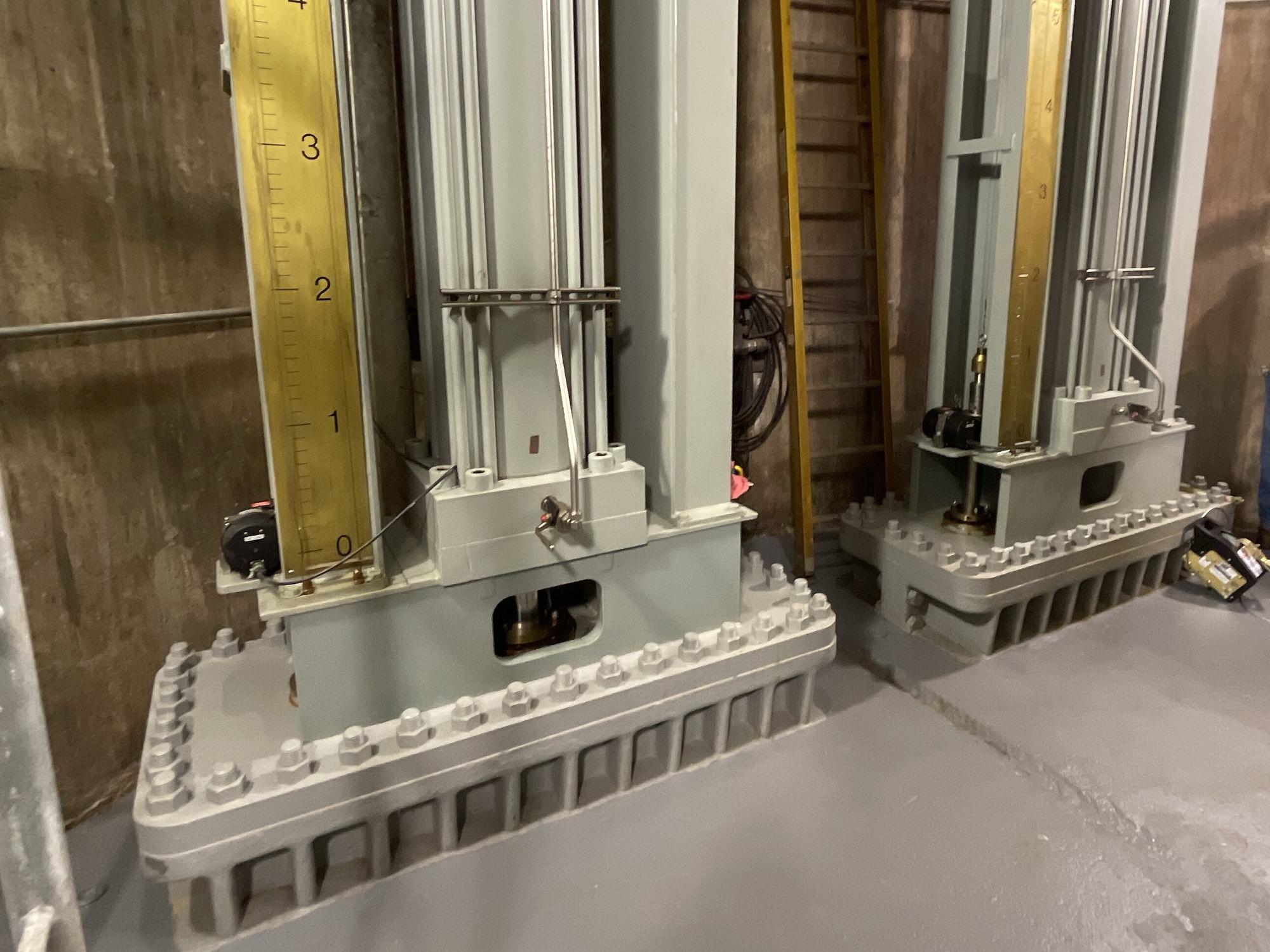
The renovated gate chamber, pictured here, sits directly above the gates and provides access to the upper portion of the gates, along with operating and hydraulic equipment.
Due to a design issue, it was impossible to see crucial parts of the malfunctioning emergency gate—including the part that seemed to have failed—while it was holding back the full force of the water. But Hazen found corrosion in those same parts of the downstream service gates, indicating that the failed gate could have the same damage.
Based on that evidence, other signs of damage to the gate equipment, and the fact that all of it dated to 1952, Hazen recommended replacing all four gates.
An Accelerated Repair
The entire project needed to be done in just three years, in keeping with an agreement between UPRC and the Maryland Department of the Environment. All of it was finished on time. By the end of the project, Hazen had helped UPRC:
- Win a $6 million grant from the American Recovery and Reinvestment Act (ARRA) that was crucial for covering costs
- Design customized gates for the dam’s unique structure
- Design a new elevator to replace the stairs to the control chamber, new hydraulic equipment, and a wide range of other upgrades and repairs
- Work with the state to secure permitting for all the work, including a custom permit for the elevator
- Use an inflatable bulkhead as a temporary barrier to enable construction
- And accelerate construction to finish it before record snowmelt began in spring 2010

A severely corroded thrust nut (a piece of gate equipment) in one of the dam’s original sluice gates.

Hazen also annually inspects Savage River Dam. Here, one of our engineers surveys the dam’s spillway, built to one side of the main embankment
The Association of State Dam Safety Officials (ASDSO) awarded Hazen and UPRC the Northeast Award of Merit for successfully repairing the dam in extremely difficult circumstances.
Hazen has since helped UPRC complete multiple other repairs to the dam. We’ve also used cutting-edge flood models to update the estimation of the dam’s probable maximum flood (PMF) to half the size of the original estimate made by the Army Corps of Engineers. The updated models allowed UPRC to avoid an estimated $5 million in modifications they would have had to make based on the original PMF estimate.
The new gates, meanwhile, have done exactly what they’re supposed to do: keep Savage River Dam’s water useful—and safe—for the hundreds of thousands of people who rely on it.






